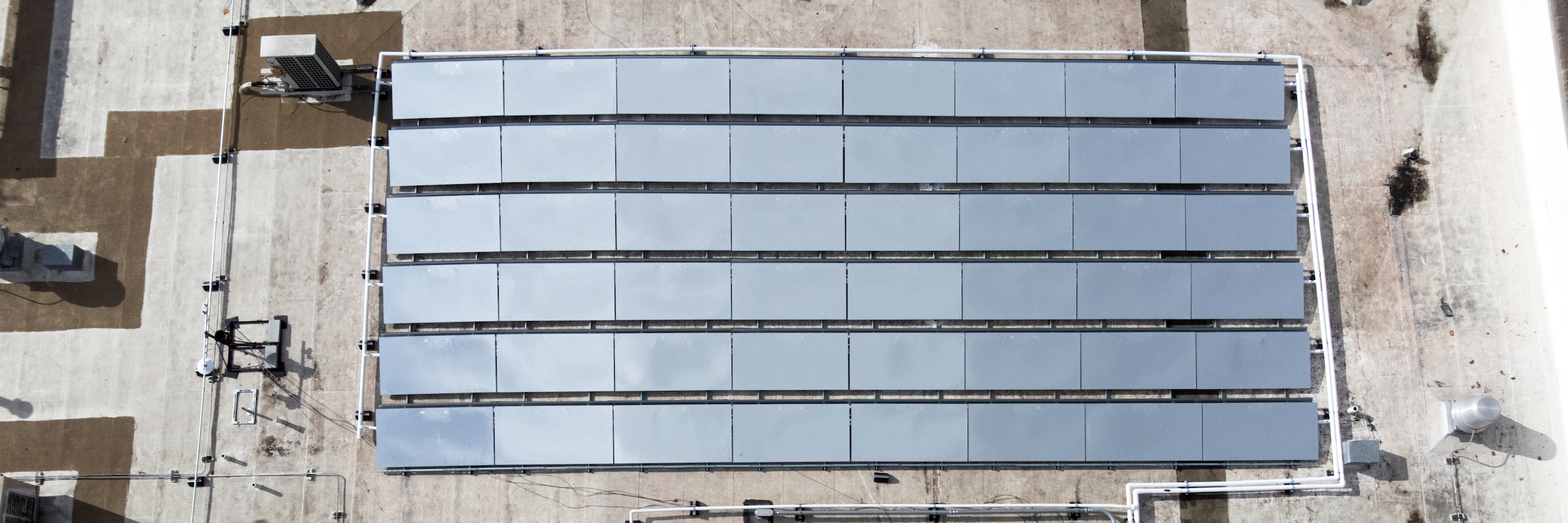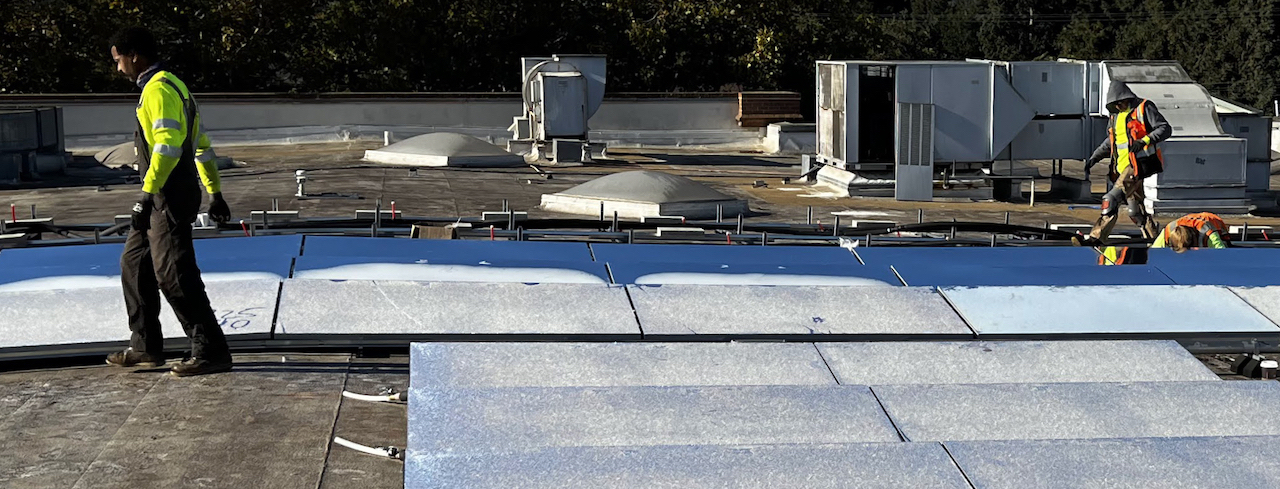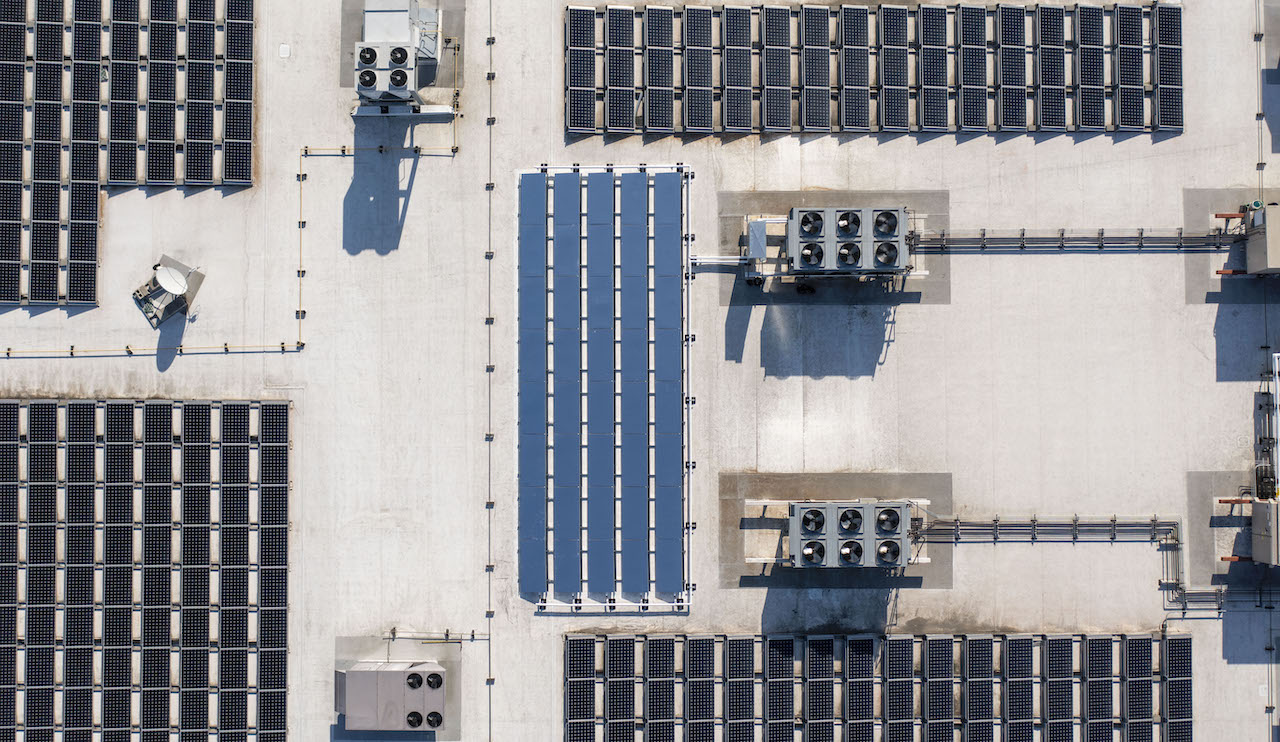
Sometimes, the secret to developing new technologies is rooted in time honored traditions of the past, albeit with the benefit of considerable technological hindsight. Imagine trying to reintroduce a concept as old as radiative sky cooling to combat climate change. This is exactly what the scientists behind SkyCool Systems have brought to light in an effort to control our growing appetite for air conditioning as our planet warms. Their breakthrough technology is a marvel of scientific achievement that has transformed the physics behind ancient practices of desert ice making into a remarkably effective radiative rooftop panel which can operate around the clock to reduce greenhouse gas emissions.
In 2012, then graduate student Aaswath Raman, began bold experiments with a small team under the supervision of Shanhui Fan, Professor of Electrical Engineering at Stanford University. Their goal was to curtail the energy consumption and emissions from traditional air conditioning. Within a year, Raman and the Stanford team began testing reflective nanolayers. By 2016, Raman had formed a partnership with Stanford Mechanical Engineer, Eli Goldstein, and launched their innovative radiative cooling technology under the trade name SkyCool Systems.
The radiative cooling material that forms SkyCool’s panels is only two microns thick. This material reflects ~95% of sunlight and dissipates the invisible infrared spectrum at a wavelength of 8-13 micrometers. This ingenious application of physics allows heat reflected by the panels to escape our atmosphere instead of being trapped by the greenhouse effect. SkyCool radiative cooling panels can lower the temperature of their surroundings by 4.9 °C, allowing buildings to use less energy to keep people and perishables cool.

Sun Light & Power recently installed one of SkyCool's hybrid cooling systems at Draeger's Market in Menlo Park, California. The project features 56 radiative panels in two arrays paired with a glycol based plumbing system. Together, these systems reduce the temperature of the roof and create a giant sealed radiator. Martin Morehouse, Sun Light & Power’s Solar Thermal Estimator, said, “I was amazed when I realized that this configuration works like a solar thermal system in reverse. Instead of pre-heating the glycol to reduce the energy needed to heat water, SkyCool’s array reflects heat, which cools the fluid before returning it to a custom heat exchanger feeding the building’s air conditioning system.”
SkyCool COO George Keiser explained that their “radiative panels at Draeger’s cool without evaporating water and only require enough electricity to run a small circulating pump. The cooling effect from the panels occurs all day and night and is very well aligned with the 24/7 operation of commercial and industrial refrigeration and air conditioning systems where cooling is a dominant load. SkyCool is leveraging infrastructure from the solar industry and relied on Sun Light & Power’s commercial expertise to get the job done.” The system is expected to reduce Draeger’s electricity use for air conditioning by 10-20%.

Martin Morehouse immediately recognized the potential for SkyCool’s modular rooftop technology. The shiny metallic units look and mount similar to PV module arrays, albeit SkyCool panels are lighter and do not require any electrical connections. Unlike solar, which can generate electricity or heat water even when not directly aligned with the sun’s rays, SkyCool units must be mounted with a direct view the sky to achieve cooling. To realize this effect, the radiative panels are typically installed with a 10 degree tilt. SkyCool panels work best in hot, dry climates with minimal cloud cover.
By 2050, cooling and refrigeration is expected to consume 40% of global electricity. Innovative, affordable technologies must be deployed on a global scale in order to reduce emissions and break our dependence on fossil fuels. Modern refrigerants used in cooling are ozone safe, but they still leak over long periods of time, and ultimately, today’s hydrofluorocarbons (HFCs) produce 1,000 – 3,000 times the greenhouse gas warming of carbon dioxide (CO2). SkyCool is positioned to mitigate both of these challenges in a single product, one which could be deployed in developing as well as developed countries.
Sun Light & Power was delighted to assist SkyCool with the installation at Draeger’s Market and we wish them every success in the renewable energy sector. It is not difficult to imagine a building bearing some combination of solar PV modules, solar thermal collectors and SkyCool radiative panels coming soon to a roof in your neighborhood. Let’s help them get there – for everyone’s sake!

Seamas Brennan is Marketing Coordinator at Sun Light & Power
Photos courtesy of SkyCool Systems